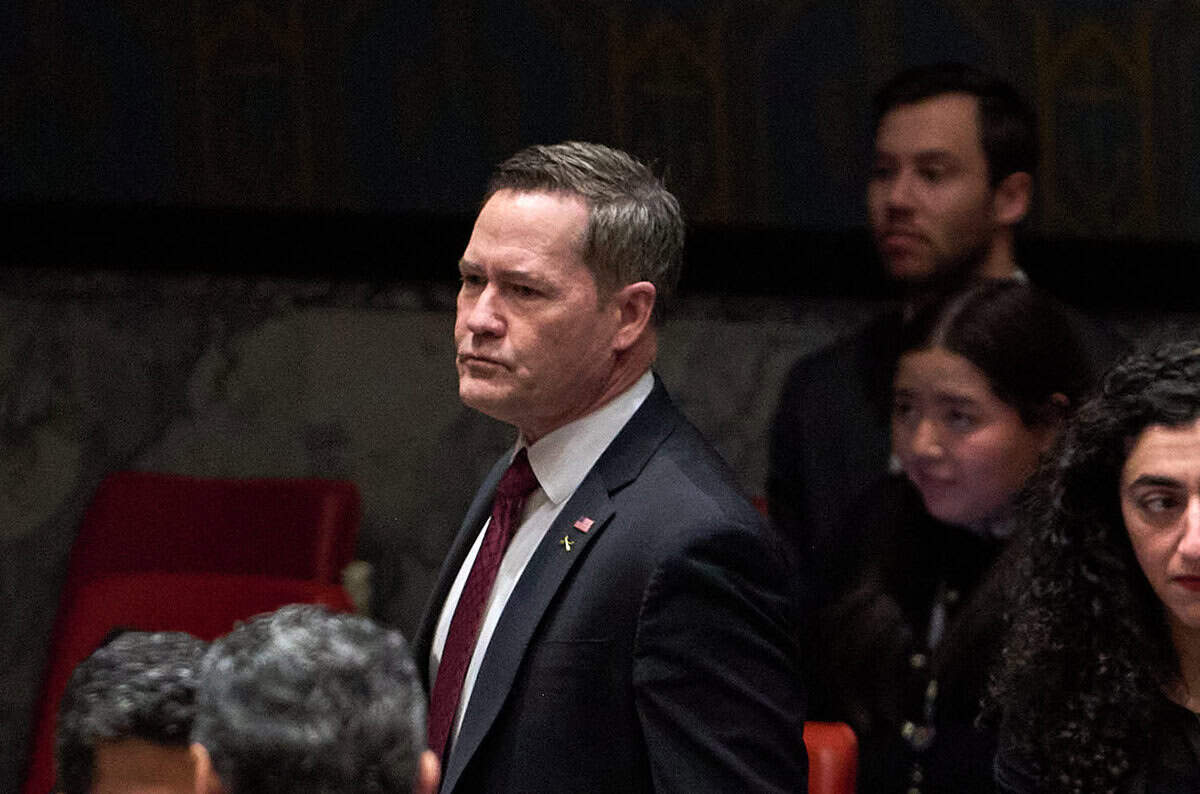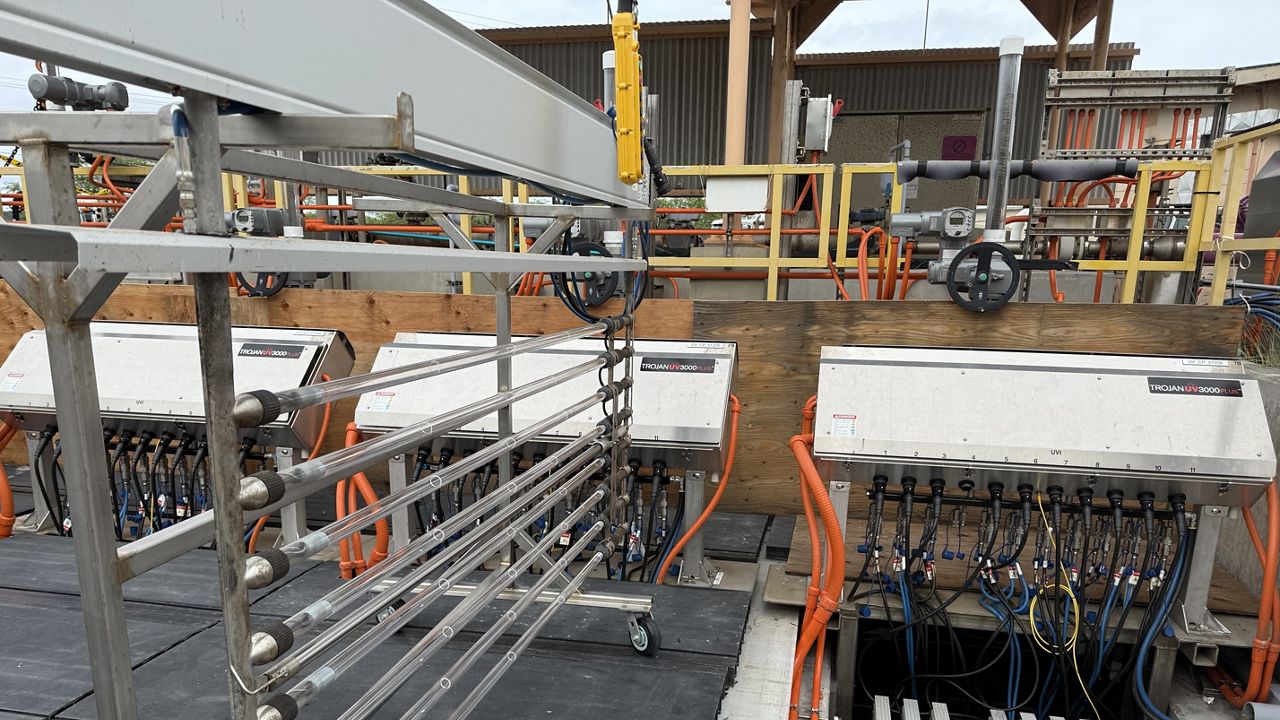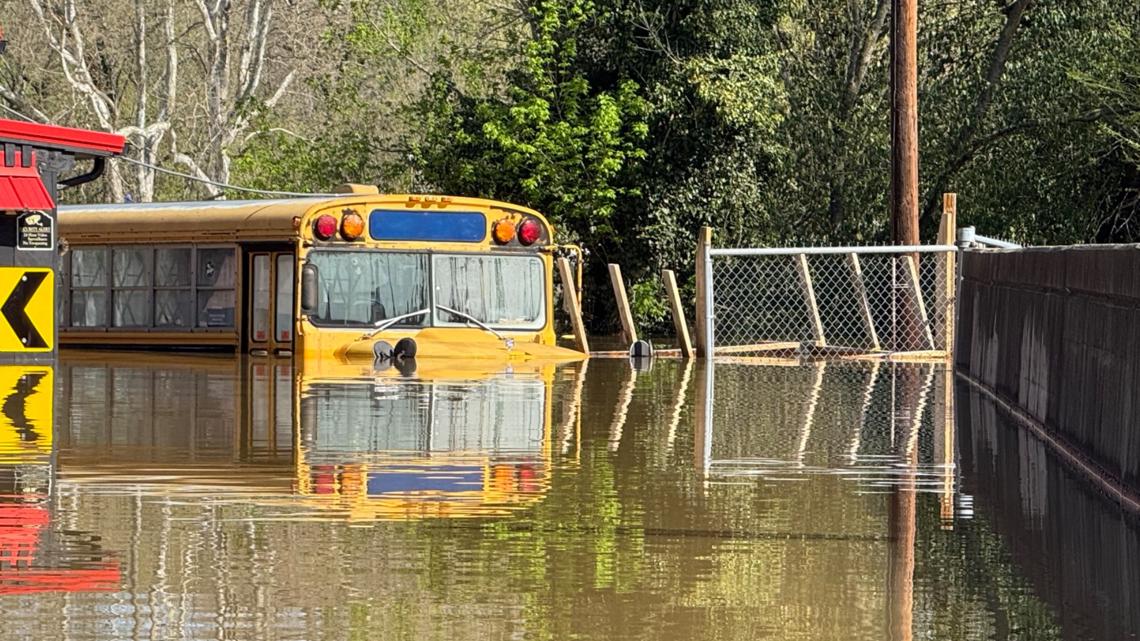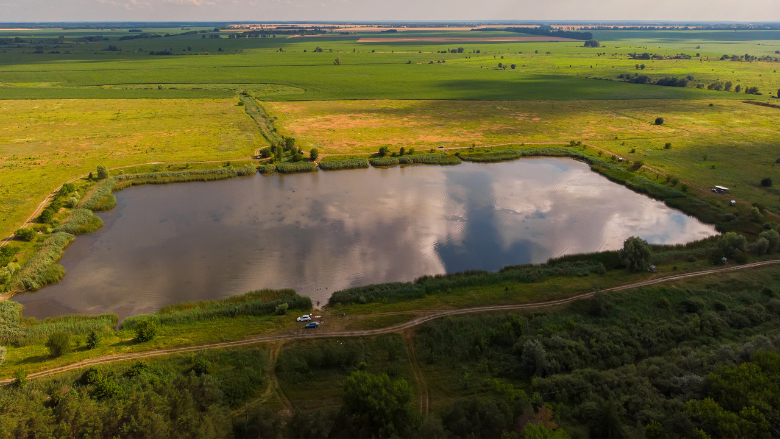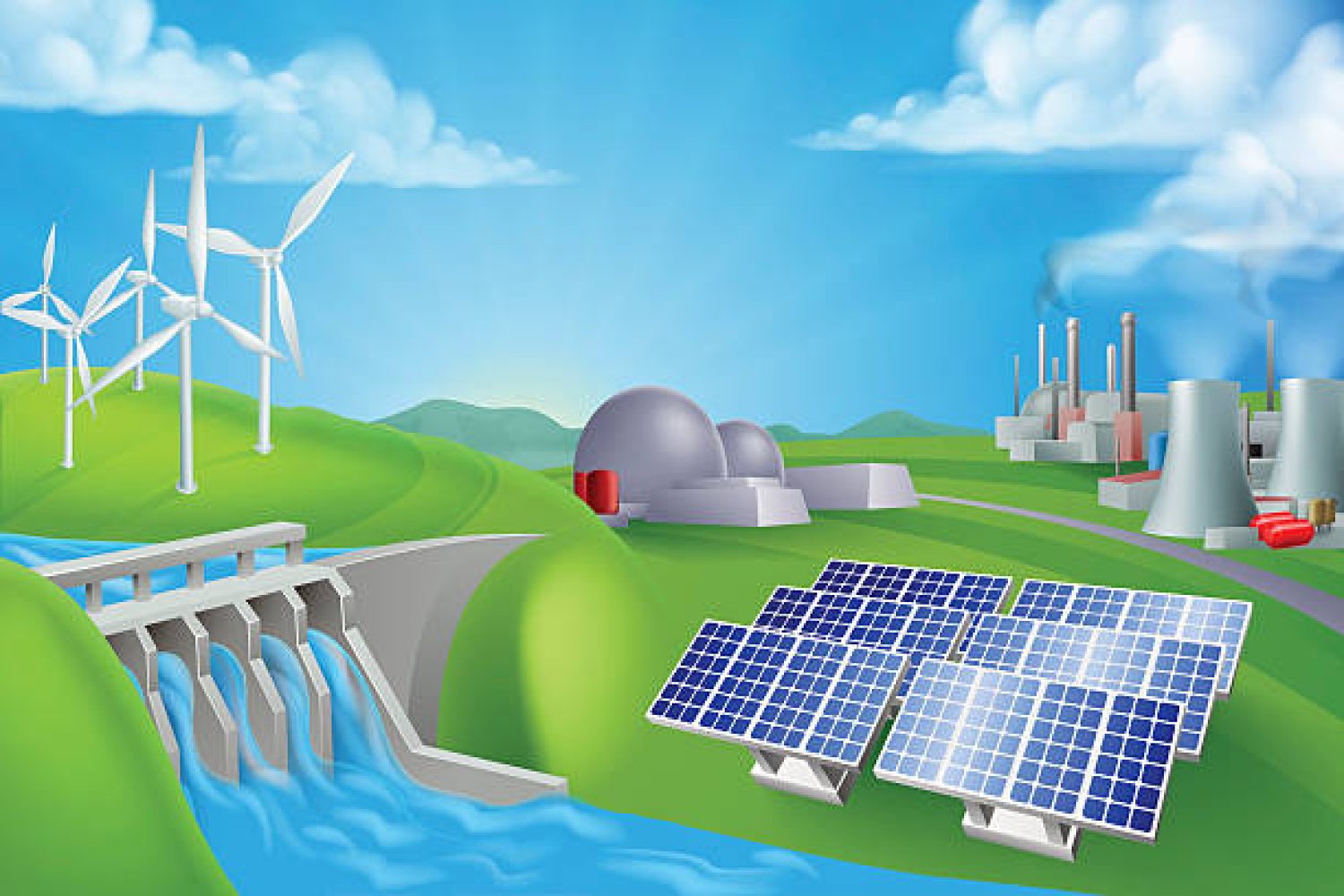Oregon’s Rural Power Utility Has Become a Big Polluter
With the arrival of Amazon data centers in rural eastern Oregon, a small power grid is forced to rely on coal plants to meet demand. Tax incentives for Amazon are poised to increase emissions even further.

Oregon’s Rural Power Utility Has Become a Big Polluter
Umatilla Electric Cooperative is responsible for 1.8 million tons of carbon emissions annually despite having just 16,000 customers. One of those customers is Amazon, which has data centers in areas where renewable energy access is limited.
Yet the region also bears an enormous, and growing, carbon footprint.
The rural area’s power utility became one of the state’s big polluters beginning in 2018. By 2020 its carbon emissions had doubled. In 2021, it doubled again.
The Umatilla Electric Cooperative is responsible for 1.8 million tons of carbon emissions annually, according to newly released state data, even though it has just 16,000 customers. It’s now the third-largest emitter of greenhouse gases among all Oregon utilities because of one of those customers: Amazon.
The soaring greenhouse gases are a byproduct of Oregon tax policy and represent a profound setback for the state’s energy aspirations. Amazon has capitalized on hundreds of millions of dollars in local tax breaks to subsidize a constellation of enormous, power-hungry data centers around the cities of Boardman and Hermiston, areas where the regional power grid has little access to renewable energy.
Data centers’ power demands have upended Oregon’s fight against global warming, exposing the limitations of the state’s electrical grid and the state’s hope to move toward clean power.
Oregon is many years away from meaningfully expanding its transmission capacity, and with Amazon planning at least 10 more data centers in the region, eastern Oregon’s carbon footprint is poised to continue soaring.
“It is really concerning and emblematic of the broader issue that we’re seeing in terms of Oregon’s ability to achieve its climate goals,” said Nora Apter, climate program director for the Oregon Environmental Council. She said Oregon regulators and lawmakers haven’t created policies and incentives that encourage economic growth powered by renewable energy.
Both Amazon and Umatilla Electric say they’re committed to fighting climate change and to finding clean energy to power the data centers. Just this month, Amazon announced a deal to start buying renewable power from a wind farm in neighboring Gilliam County.
While that purchase will meet as little as 4 percent of Amazon’s existing electricity needs, climate advocates say the data centers might ultimately become powerful forces in the drive to upgrade Oregon’s transmission networks for renewable energy.
If data center operators are truly committed to renewable energy, some environmental advocates say, they could lobby for an upgraded energy grid, and their large loads could serve as a powerful economic incentive for generating new clean power and the transmission lines to carry it to major customers like Amazon.
“They’re willing to pay the price for clean energy and the access to power to make sure that happens,” said Nicole Hughes, the executive director of Renewable Northwest, a Portland organization backed by clean-energy producers. “These are the anchor tenants that we want because they’re willing to make that investment. So we should figure out how to work with them on this.”
Big Data, Big Tax Breaks
Online shoppers think of Amazon as the “everything store,” the place to buy books, laundry detergent, furniture and fashion. But data centers are the Seattle-based company’s most profitable and fastest-growing business.
The company hosts data for podcasts and video streamers, corporate bookkeepers and government agencies. It’s all housed in enormous digital warehouses like those in eastern Oregon, with thousands of high-end computers humming steadily around the clock as they process information and stream it to Amazon’s clients.
Umatilla Electric used to rely on renewable hydropower from federal dams to meet the modest energy needs of its clients, which were mostly families, farms and food processors. Amazon’s arrival transformed the landscape over the past decade.
Amazon clustered in eastern Oregon because local governments there offered it some of the most valuable tax breaks in the world. Amazon saved nearly $100 million in property taxes alone in Morrow and Umatilla counties last year, and local officials have promised incentives worth more than $1 billion to keep Amazon growing.
Hulking, windowless, concrete data centers stretch along the highways and fields around Boardman and Hermiston. Their computers rely on tremendous amounts of electricity to operate and to keep cool.
Federal hydropower had already been largely allocated to Umatilla Electric’s existing customers. So the rural cooperative must buy on the open market to meet Amazon’s needs — and nearly all the available power is generated by fossil fuels like natural gas.
That’s made the utility’s power much dirtier. Its emissions per megawatt hour are 2,000 percent more carbon-intensive than a decade ago, according to the Oregon Department of Environmental Quality.
The issue of Oregon data centers’ growing carbon cost is not limited to Amazon.
Apple, Facebook, Google and Elon Musk’s X social media company operate large data centers in Prineville, The Dalles and Hillsboro, creating enormous new power demands. They buy energy from large utilities and power authorities that have many other customers, so it’s hard to discern how much power those companies use.
Last summer, though, Portland General Electric and two regional power agencies issued reports dramatically increasing their forecasts for data center power demand. The Bonneville Power Administration estimates that data centers’ electricity use in Oregon and Washington will more than double by 2041, requiring power equivalent to a third of all the homes in the two states.
Transmission Squeeze
While data centers have huge energy loads, they don’t employ nearly as many people as other major Northwest industries, like aircraft manufacturing and semiconductor production. But the server farms do have a big economic impact in small communities.
Amazon has become a major force in Morrow and Umatilla counties. Though the company won’t say how many people work for Amazon in the region, local employment has grown by 14 percent over the past decade amid Amazon’s rapid expansion.
It’s not clear how much of that growth is directly tied to the data centers, but the company has surely created hundreds of local jobs, and probably a few thousand.
Amazon has paid more than $73 million in local taxes since the middle of 2020. It’s the largest taxpayer in both counties, though its tax exemptions are worth at least triple what it actually paid during that time.
The company says it’s committed to “net-zero carbon emissions” across its operations by 2040. But when Oregon lawmakers considered a bill last year to make data centers subject to the state’s clean energy rules, Amazon mounted a furious lobbying campaign to kill it.
Amazon and Umatilla Electric were among the biggest lobbyists in Salem last year, collectively spending more than $500,000 during 2023. The data center clean energy bill died in committee.
Across the Columbia River in Washington, lawmakers quietly passed a similar bill last year without vocal opposition from anyone. Amazon doesn’t have major data centers in its home state.
Oregon lawmakers have opted not to try again this year. Instead, Rep. Pam Marsh, who led last year’s unsuccessful clean-energy campaign, said she’s now committed to working with Amazon. She hailed the company’s wind power purchase this month.
“It’s great news that Amazon is actively pursuing renewable energy for its data centers — and these projects need to be followed by more,” Marsh said in an email. “The company will need to look for clean energy in every corner and from every source. As a legislator, I’ll be watching closely, and looking for ways for us to support Amazon’s efforts.”
Amazon, like most other large technology businesses, accepts the scientific consensus that human activity is changing the climate in potentially catastrophic ways. The company says it is financing clean power projects in other parts of the western U.S. to compensate for its growing impact in Oregon and says it’s among the world’s largest corporate buyers of renewable electricity.
Amazon says it would like to build more renewable power supply in Oregon, too, and is backing legislation during the state’s current legislative session to support offshore wind power, battery storage and clean energy incentives.
But the company says the regional power grid doesn’t have the capacity to carry that electricity from wind farms and solar arrays to its data centers near Boardman and Hermiston.
“It’s a growing pipeline and we need more transmission infrastructure. We’ve been talking about that for some time to policymakers,” said Shannon Kellogg, an Amazon vice president for public policy.
Amazon has identified a genuine problem with the transmission bottlenecks, said Aseem Prakash, a political science professor at the University of Washington and director of the UW Center for Environmental Politics.
“The big problem is these transmission lines. How do you move a larger volume of electricity through the transmission lines?” Prakash said.
It can take a decade or more to win approval for major new power lines and longer still to build them. That renders many proposed renewable energy projects useless, because there’s no way to get wind or solar power to the customers like Amazon who want the electricity.
However, Prakash said these bottlenecks don’t let Amazon off the hook on clean power. He said the company ought to take a more proactive role in developing the transmission capacity so it has access to the renewable energy Amazon says it wants.
Instead, Prakash said Amazon is pointing to renewable energy certificates – a controversial measure of accounting for clean energy purchases elsewhere – to mask its carbon impact.
“They want to go to green,” Prakash said. “But there are obviously some perverse things happening where they are resorting to these shenanigans.”
Missing Targets
Amazon, which has been operating server farms in Oregon for well over a decade, is only now beginning to buy some clean power directly for its local data centers.
The company announced this month that it will purchase 200,000 megawatt-hours of electricity from a wind farm in Gilliam County, one county over from its data centers near Boardman. Amazon will pay the wind farm’s owner, Avangrid, to replace blades on aging turbines with more efficient ones.
“Those are the acts of a modest corporation acting modestly,” chided Angus Duncan, former chair of the Oregon Global Warming Commission.
Umatilla Electric’s power sales have increased by 5 million megawatt-hours annually during Amazon’s data center buildout over the past decade, so Amazon’s wind power deal represents a tiny fraction of total power demand. And Duncan noted Amazon is buying power from an existing wind farm, rather than financing new power generation as it prepares to build several more data centers in the area.
While Amazon is correct that the Northwest lacks enough transmission capacity to meet the region’s renewable power goals, Duncan said the company is asking too much from others to overcome the problem.
“Does it think that the world owes it a transmission system that will deliver the power from the resource to the load?” Duncan asked.
While he acknowledged Amazon could be a powerful ally in pushing for an expanded power grid, he said Amazon has failed to lay out how it plans to achieve its pathway to renewable power in Oregon and the resources it will use to accomplish that.
“Folks like Amazon will set a goal, a decarbonization goal, but frequently their intermediate actions seem to operate contrary to that goal,” Duncan said.
Oregon Rep. Mark Gamba, D- Milwaukie, is working with Amazon, state regulators and environmental and industry groups on legislation to accelerate the expansion of the regional power grid. He said transmission constraints will make it impossible for private Oregon utilities to transition off of fossil fuels by 2040.
“We have what I would call mediocre climate goals in this state around energy, and we’re not going to hit any of them,” Gamba said, “because of transmission.”
New transmission lines require coordination among utilities, private landowners, state regulators and the Bonneville Power Administration, among many others. The result, Gamba said, is a torturous process that lags far behind the state’s climate goals and new energy demands from data centers and other industrial customers.
“It’s basically a 20-year process at this point to get new transmission sited,” Gamba said.
Next year, Gamba hopes to introduce legislation that would begin the process of creating a regional transmission authority that could accelerate the work of expanding the electric grid. Amazon has been helpful in the process, Gamba said, but he said there’s an overarching lack of urgency among utilities, power authorities and lawmakers.
Climate change is a ticking clock, and Gamba said the current pace of change is woefully inadequate.
“The physics of climate change don’t really care about our scurrying along,” he said. “It is happening at its own pace, and it is up to us to meet that.”
What is Your Reaction?
 Like
0
Like
0
 Dislike
0
Dislike
0
 Love
0
Love
0
 Funny
0
Funny
0
 Angry
0
Angry
0
 Sad
0
Sad
0
 Wow
0
Wow
0







